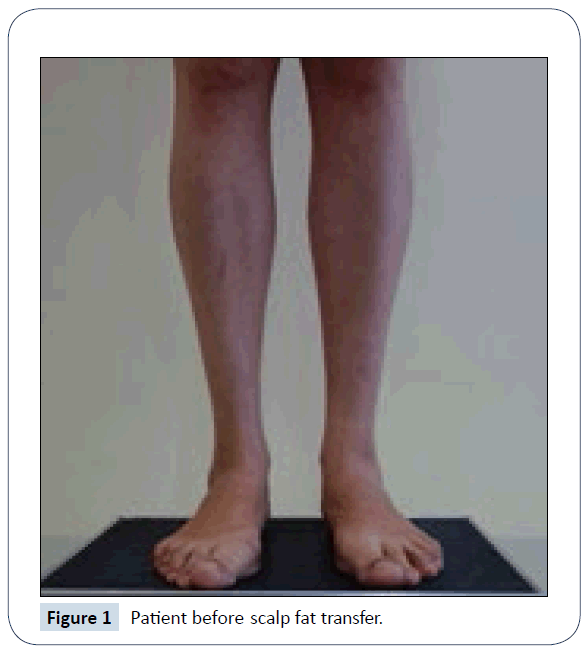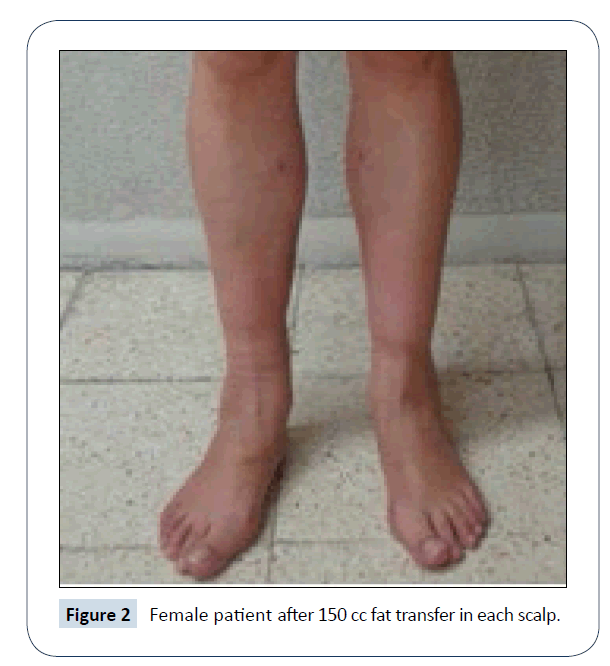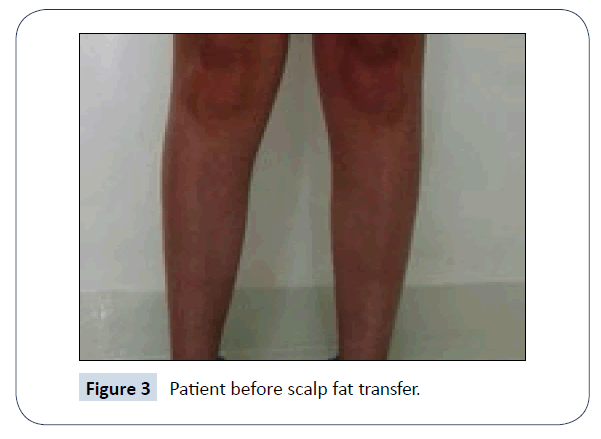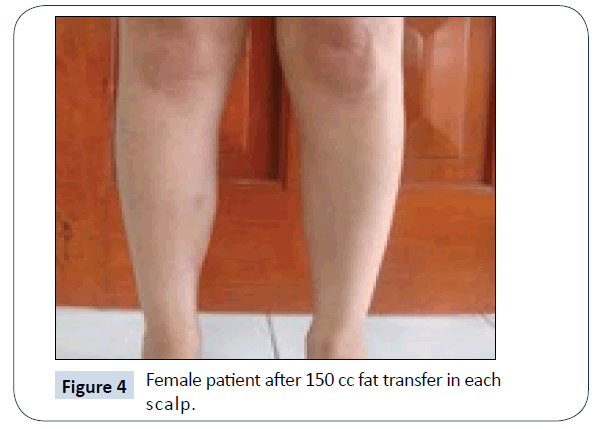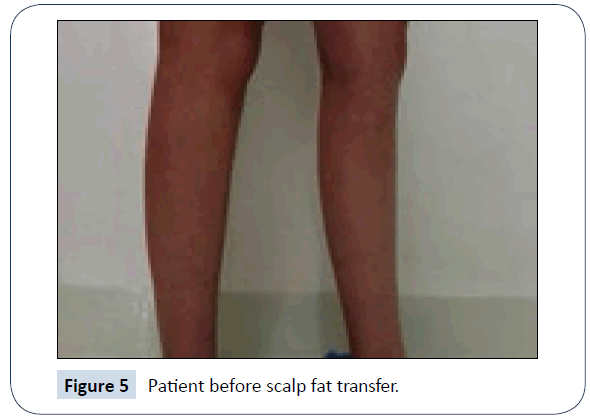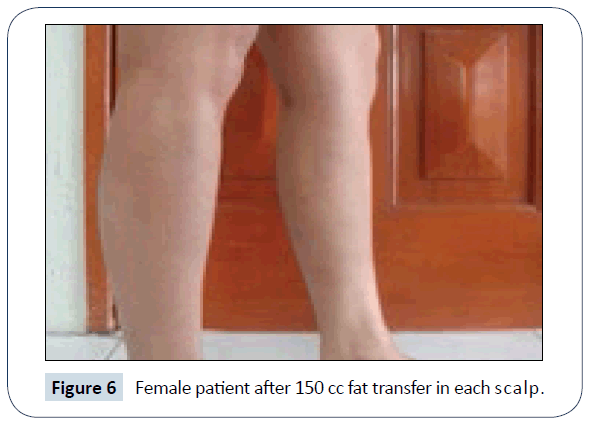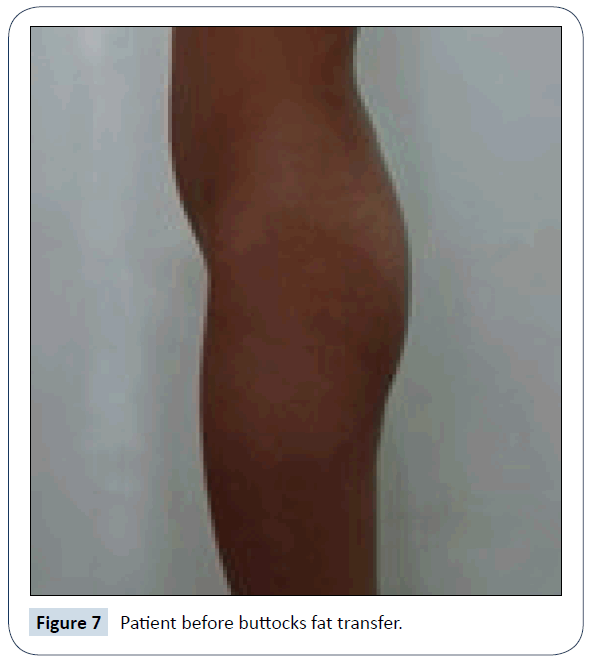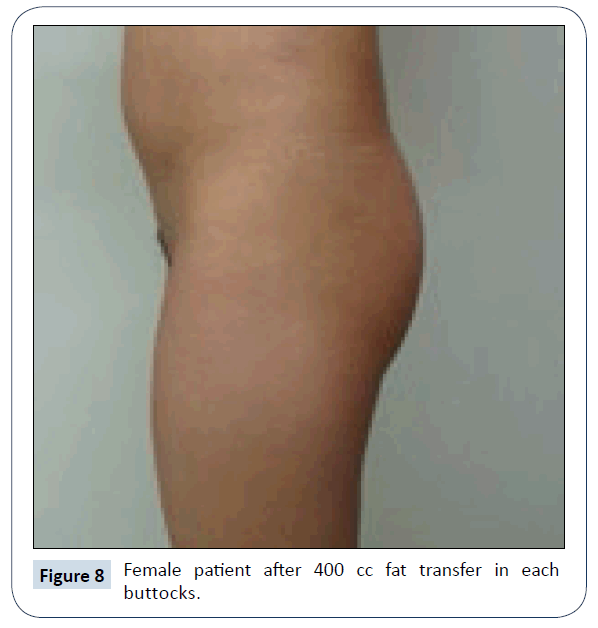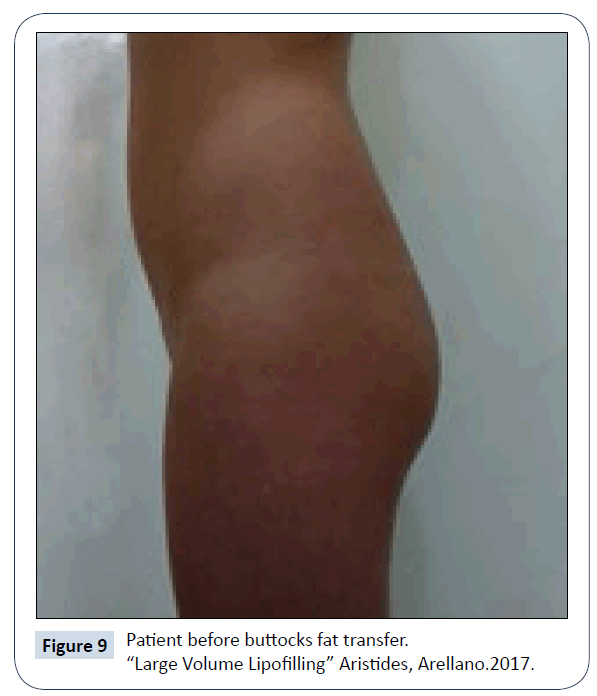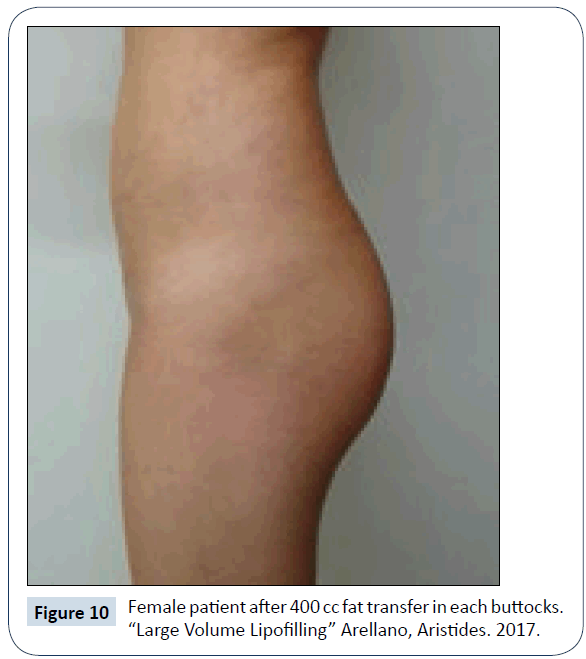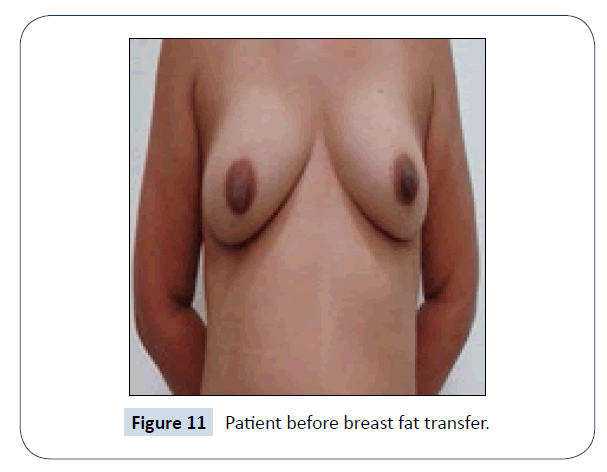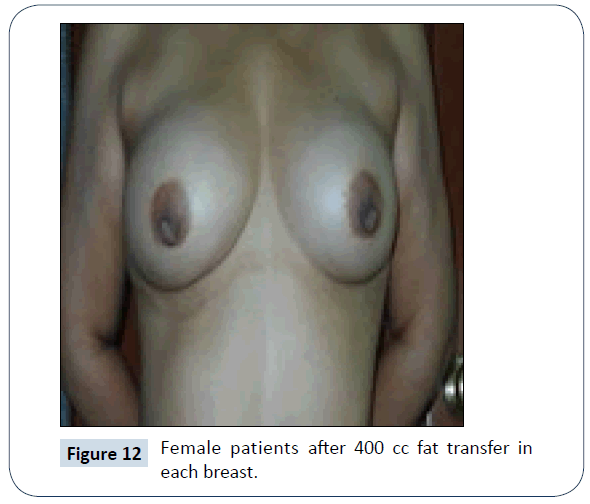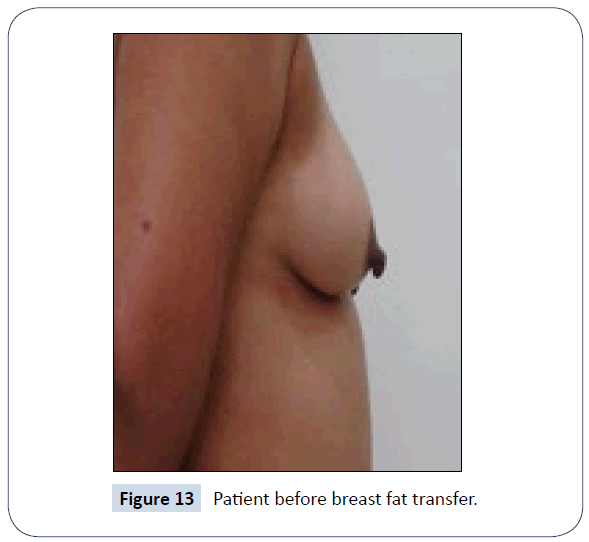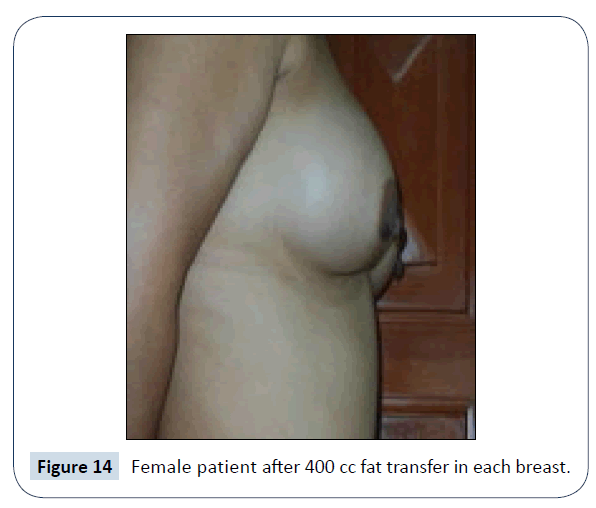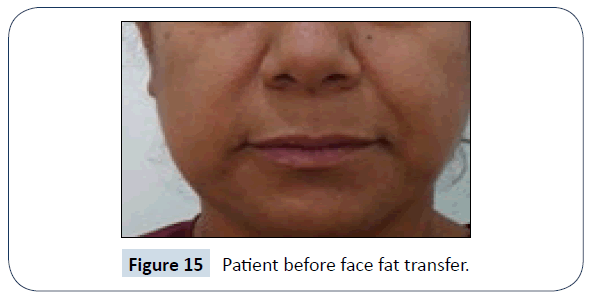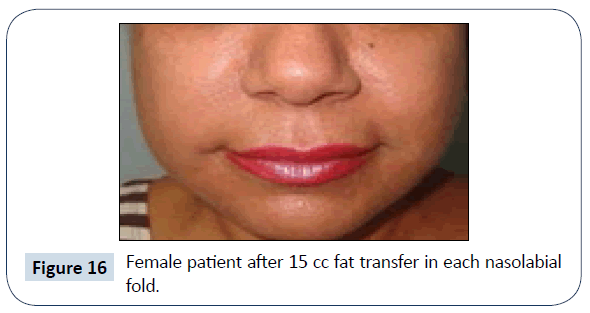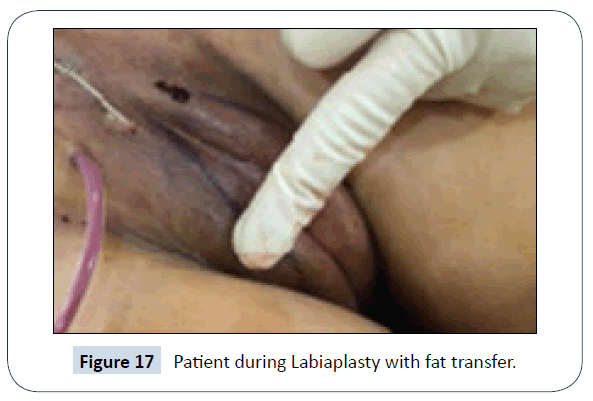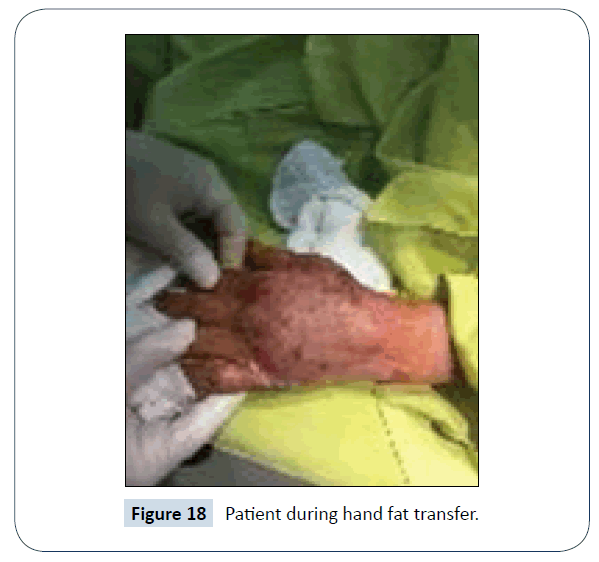Aristides Arellano-Huacuja*, Dafne Arellano-Montalvo and Anja Arellano-Montalvo
Dermatology Clinic and Aesthetic Surgery Puebla, Puebla, Mexico
- *Corresponding Author:
- Aristides Arellano-Huacuja
Director, Dermatology Clinic and Aesthetic Surgery Puebla
Puebla, Mexico
Tel: (52) (222) 2669169
E-mail: aristidesarella@yahoo.com.mx
Received Date: December 09, 2017; Accepted Date: December 12, 2017; Published Date: December 26, 2017
Citation: Arellano-Huacuja A, Arellano-Montalvo D , Arellano-Montalvo A (2018) Large Volume Lipofilling with Close System in Aesthetic Plastic Surgery. J Healthc Commun 3:14. doi: 10.4172/2472-1654.100125
Introduction
Fat transfer is also called lipofilling injection or fat transplantation. Injecting fat is a natural, safe and non-allergenic procedure.
Human adipose tissue contains a cell population of adult stem cells, which proliferate and differentiate into multiple cell types: new adipocytes, myocytes, osteoblasts, etc. This tissue also holds a large number of grow factors (GF´s). Notably, Adipose Stem Cells (ASCs) characterize in maintaining its undifferentiated original form and function [1,2].
During the natural aging process, the fatty tissue that once had a rounded and youthful appearance can begin to break down, resulting in wrinkles and sagging skin. Therefore, fat injections in these areas help improve not only the appearance of the skin, but also the consistence of it.
ASCs can be used to correct large volumes or small imperfections; everything depends on the amount of fatty tissue in good condition that can be obtained from the patient (Figures 1-5).
Figure 1: Patient before scalp fat transfer.
Figure 2: Female patient after 150 cc fat transfer in each scalp.
Figure 3: Patient before scalp fat transfer.
Figure 4: Female patient after 150 cc fat transfer in each scalp.
Figure 5: Patient before scalp fat transfer.
Large Volume Lipofilling
Adipose tissue can be obtained by surgical resection, by tumescent liposuction or ultrasonic liposuction. In the case of the tumescent technique infiltration of adipose tissue is performed with saline solution (100 ml) plus epinephrine (1 ml) and 20 ml of lidocaine [3].
To obtain the tissue, aspiration cannulas are used to perform the lipofilling procedure. They vary in diameter; therefore, cannulas with a diameter of maximum 3 mm are used to perform large volume lipofilling (Figures 6-9).
Figure 6: Female patient after 150 cc fat transfer in each scalp.
Figure 7: Patient before buttocks fat transfer.
Figure 8: Female patient after 400 cc fat transfer in each buttocks.
Figure 9: Patient before buttocks fat transfer. “Large Volume Lipofilling” Aristides, Arellano.2017.
After aspiration, the fatty tissue must be processed to separate the fat cells (adipocytes) of the least useful components (blood, plasma, remains, broken adipocytes, free oil…), allowing the injection of a pure tissue. Gravity is used as a technique to cause spontaneous separation of the oil, fluid and blood components from the fatty tissue.
Places of "donation" are mainly the abdomen, abdominal and lumbar flanks and thighs. Fatty tissue can be transferred to buttocks, face, calves and thighs. It is important to place the “spaghetti- like” threads of fat in different layers at different levels (structural) with the close-system [4].
This technique allows larger volumes of fat to survive more sufficiently with stable results.
The volume injected is typically higher than expected because the adipose tissue, being alive, is subject to fat metabolism and absorption. Approximately six months after the injection, fat cells that have remained alive recover its volume, resulting in a recovery in volume of the treated area (Figures 10-15).
Figure 10: Female patient after 400 cc fat transfer in each buttocks. “Large Volume Lipofilling” Arellano, Aristides. 2017.
Figure 11: Patient before breast fat transfer.
Figure 12: Female patients after 400 cc fat transfer in each breast.
Figure 13: Patient before breast fat transfer.
Figure 14: Female patient after 400 cc fat transfer in each breast.
Figure 15: Patient before face fat transfer.
Advantages of Lipofilling
- Easily accessible
- Autologous
- Low morbidity
- Stem cells
- Fat transfer can be combined with other surgical procedures
- An allergic reaction is never present
Disadvantages of Lipofilling
The unpredictable resorption rate is the major disadvantage of the lipofilling procedure. It is important to realize that often several lipofilling sessions are necessary to achieve the surgical goal. Lifestyle (smoking habits), diet, general condition, age, medication and tissue quality at the recipient site will dictate the resorption rate or final outcome. Scientific data and clinical reports have shown that the resorption rate can vary from 20% to up 30% (Figures 16-18).
Figure 16: Female patient after 15 cc fat transfer in each nasolabial fold.
Figure 17: Patient during Labiaplasty with fat transfer.
Figure 18: Patient during hand fat transfer.
Also, Cyst formation after a lipofilling procedure can occur. This is explained by the fact that fat cells could not survive and merge together to form oil cysts. Oil cysts are generally approached with massage or liposuction of the cyst formation [5].
Conclusion
In our 26 years of experience, the lipo transfer has been used to increase the amount of breast, buttock, calf, thigh and face. The technique has given very successful results, if you place the fat into the muscle, because muscle has more vascularity, which improves fat survivor. Also, the close-injection-system avoids fat dehydration, because the fat never is exposed to air. Additionally, the close-system injects the fat with a cannula, which allows us to place a better quality and quantity of fat in the desired area without damage or contamination risk.
References
- Yoshimura K, Sato K, et al. (2008) Cell-assisted lipotransfer for facial lipoatrophy: Efficacy of clinical use of adipose-derived stem cells. Dermatologic Surgery 34: 1178-1185.
- Meruane M, Rojas M (2010) Células Troncales Derivadas del Tejido Adiposo. Int J Morphol 28: 879-889.
- Benito-Ruiz J (2013) Injertos de tejido adiposo en cirugía estética mamaria. Cir Plást Iberolatinoam 39: s51-s57.
- Kasem A, Wazir U, Headon H, Mokbel K (2015) Breast lipofilling: A review of current practice. Arch Plast Surg 42: 126-130.
- https://www.lipofilling.org

